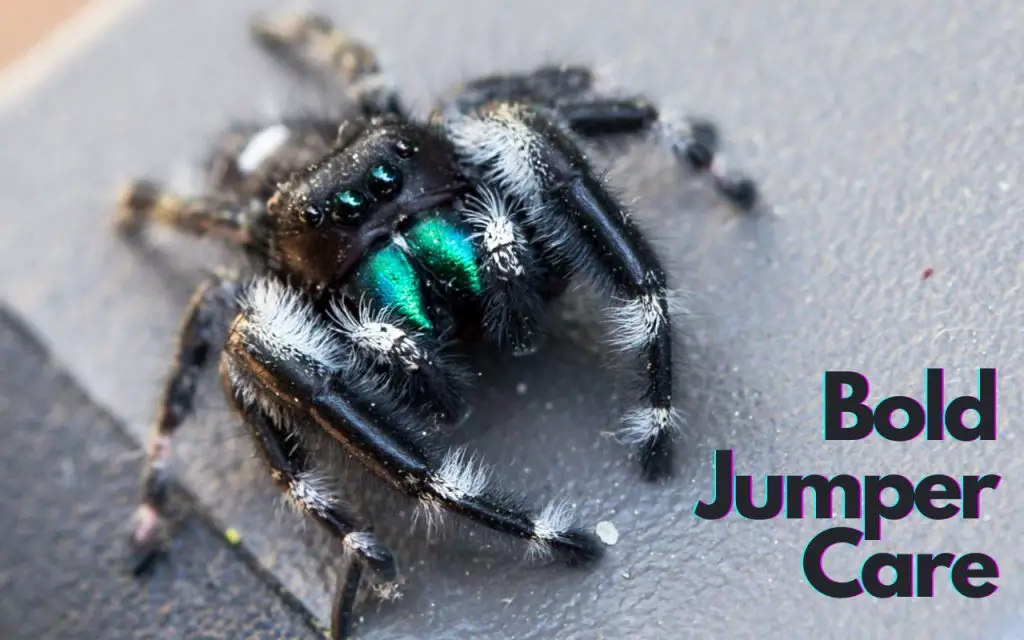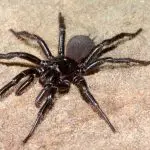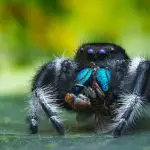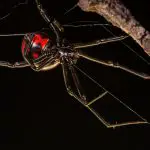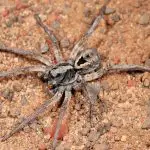Last updated on June 23rd, 2023 at 08:28 am
In today’s blog post, I’m going to tell you everything you need to know about Bold Jumping Spider (Phidippus audax) husbandry. If you like jumpers in general, you’ve probably already heard of this one. I say this because at up to 15mm in length, the Bold Jumper is one of the largest species in North America.
It also happens to be a very active, curious species, with striking coloration and incredible metallic green chelicerae. As you might expect, it is one of the species I most recommend for any spider keeper.
Let’s jump in and find out more about it!
An Introduction to the Bold Jumping Spider
The bold jumping spider, scientifically known as Phidippus audax, is a common species native to North America. Their audacious leaps, stark black body adorned with striking white or iridescent blue markings, give them a distinctive and charismatic presence.
But there is so much more to these creatures than just their appearance. From their unique behavior patterns to their specialized care needs, these spiders offer an immersive experience that extends beyond the conventional pet-keeping norms.
Setting Up a Suitable Habitat for Your Spider
Creating a suitable environment is the first and foremost step in ensuring the well-being of a bold jumping spider. The spider’s housing should mimic its natural habitat to the best extent possible.
A small, well-ventilated enclosure, such as a small terrarium or Perspex invertebrate enclosure, is ideal for these spiders.
Decorate it with natural elements like twigs, bark pieces, and leaves. Such an environment not only keeps the spider comfortable but also provides ample opportunities for it to exhibit its natural behavior, making observing it a lot more fun.
Maintaining Ideal Temperature and Humidity
Just like any other living creature, bold jumping spiders have specific temperature and humidity requirements for healthy living. They thrive best in temperatures that hover around 20 to 25°C (68 to 77°F). Regarding humidity, a level of 60 to 70% seems to suit them the best. Regular use of a good-quality digital thermometer and hygrometer can help ensure these conditions are maintained consistently within the spider’s enclosure.
If you live somewhere within the distribution range of Bold Jumpers, you’ll notice that you only see them during the spring, summer, and early autumn months. This is the time of year you need to replicate for them. They like it warm and humid, like an average day in the Midwest during summer.
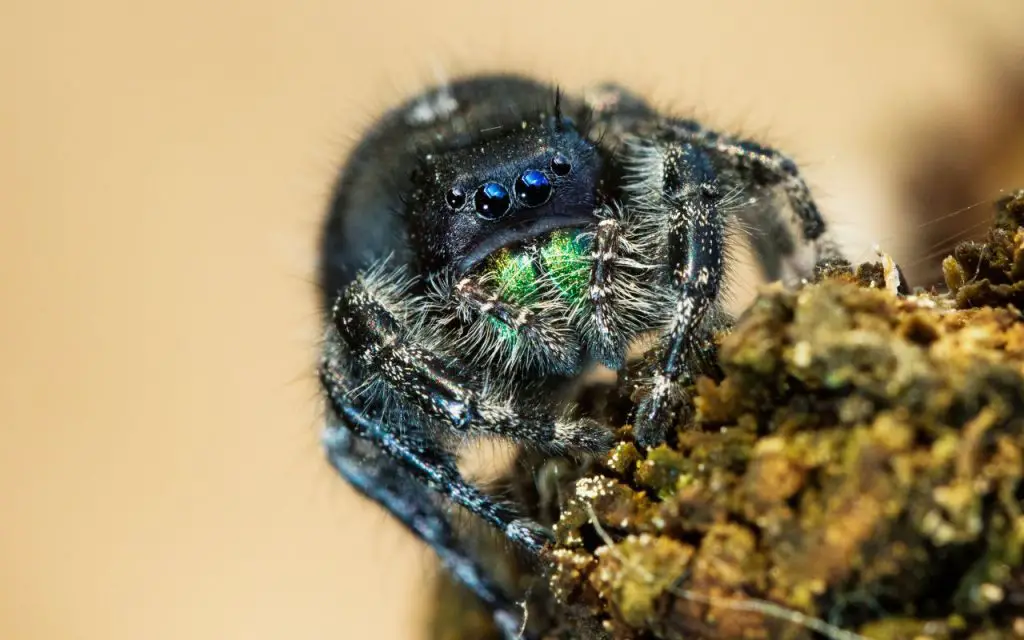
Nutrition: What Does Your Bold Jumping Spider Eat?
Feeding a bold jumping spider is an experience in itself. They have an appetite for a variety of small insects. Some of their favorites include flies, crickets, and moths. I’ve found that offering a variety of food keeps the spiders stimulated and healthy.
It’s also a great sight to watch them hunt and capture their food, exhibiting their unique tactics and the famous jump. A balanced diet fed once every two to three days works well to keep these spiders thriving.
Personally, I avoid feeding them anything larger than themselves. They are extremely capable of hunters, but it’s not worth the risk of them being injured by their prey.
They can eat:
- Fruit flies (when young)
- Crickets
- Waxworms
- Baby hornworms
- Mealworms
- House flies
- Small moths
Ensuring Adequate Hydration
You might not see them drink on a regular basis, but jumping spiders do require hydration. In fact, they will quickly die if their enclosure is too dry.
That said, their water needs are met differently than ours. I recommend a gentle spray of water on the walls of the enclosure every other day for the spider to sip water droplets as needed.
A small water dish filled with fresh water can also be added to the enclosure. Some spiders will never drink from this, but I like to add it just in case.
How to Handle Your Bold Jumping Spider
Jumping spiders, despite their audacious demeanor, are quite docile and generally safe to handle. However, they are delicate creatures and need to be handled with extreme care to avoid any injury.
Let the spider come to you instead of picking it up directly. Encourage it to crawl onto your hand. Remember, patience is key when dealing with these creatures.
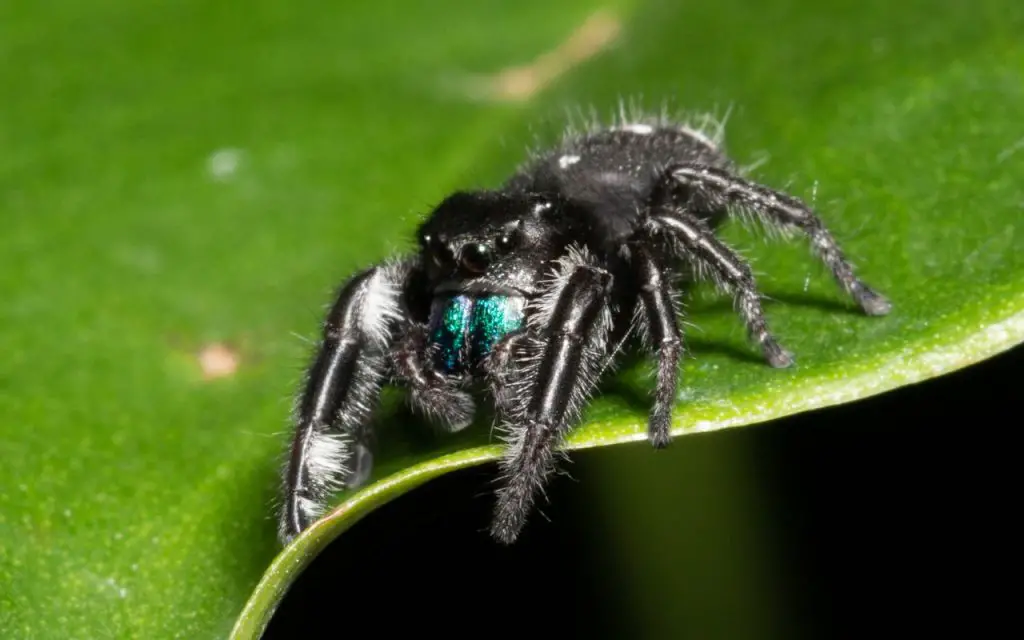
Understanding the Behavior of Bold Jumping Spiders
Observing a bold jumping spider in its daily routine is a hobbyist’s delight. These spiders exhibit unique behaviors that are quite unlike any other household pet. From their fascinating hunting tactics, characteristic bold jumps, to the intricate mating dances performed by males, there’s always something interesting to observe.
Just remember that while this is highly active, there are times when it will need to space. If your spider is hiding, it could mean a couple of things:
- It’s molting
- It’s laying its eggs
In each scenario, I advise leaving it alone. If it doesn’t come out of hiding after 48hrs, then you can start to worry.
Identifying Health Concerns and Prevention Measures
Just like any pet, bold jumping spiders are prone to certain health issues. Dehydration, fungal infections, and parasitic infestations are some concerns to watch out for.
To maintain the health of your spider, it’s important to keep the enclosure clean, provide a balanced diet, and ensure proper hydration.
Regular observation can also help you spot any abnormalities in the spider’s behavior or appearance that might indicate a health issue.
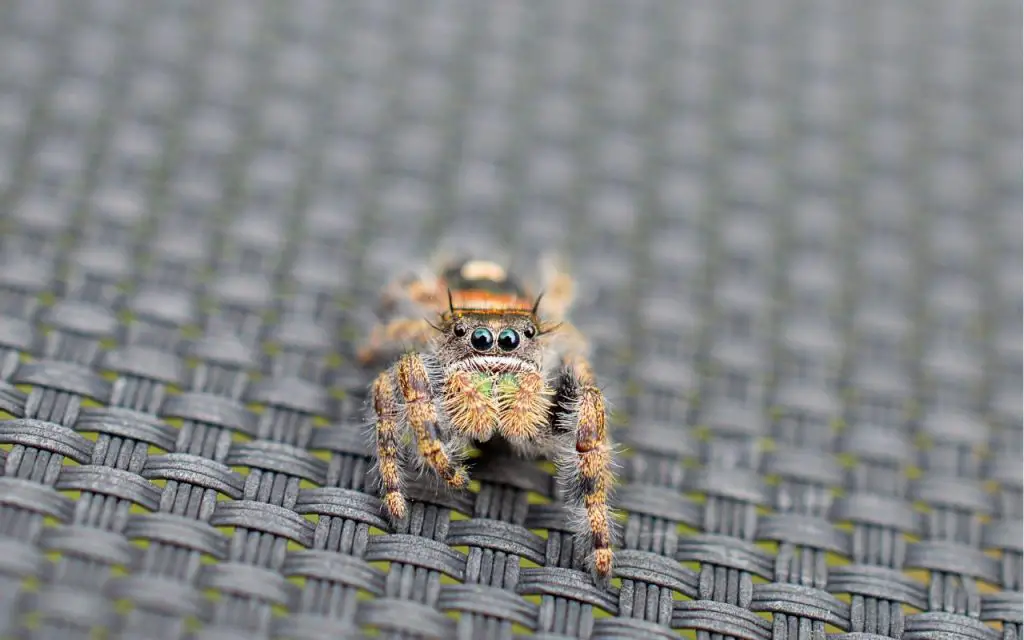
Breeding Bold Jumping Spiders: A Step Ahead
Breeding bold jumping spiders can be a fulfilling endeavor for the seasoned hobbyist. However, it’s a delicate process that requires meticulous care and attention.
The females are known to cannibalize the males post-mating in certain situations. So, careful monitoring and maintaining separate enclosures for the female spider during this period can help ensure successful breeding.
If you can get your spiders to successfully mate, without one getting eaten, then the female does all the work after that. You literally just have to wait for her to lay her eggs, then for them to hatch.
Bold Jumping Spider Care: final thoughts…
Why I like this species:
- Bold Jumpers are bold! They are active, fearless little creatures that are great for observing
- They are curious – many will crawl right onto your hand to come out and explore
- They are easy to care for
Things to consider before buying (or catching):
- They don’t live very long, often only a year or so. This is quite sad really, given how intelligent and likeable they are. That said, the oldest jumping spider ever recorded was a female Bold Jumper that made it to 3 years old, so they are still more long-lived than many of their relatives.
To summarize the extensive information we’ve covered, here’s a handy recap:
| Aspect | Requirement |
|---|---|
| Housing | glass or perspex terrarium, with natural elements |
| Temperature | 20-25°C (68-77°F) |
| Humidity | 60-70% |
| Diet | Variety of insects like flies, crickets, moths |
| Water | Small water dish or a gentle spray of water |
| Handling | Patient and minimal |
| Breeding | Separate enclosures and careful monitoring |
| Health Issues | Fungal or parasitic infections, dehydration |
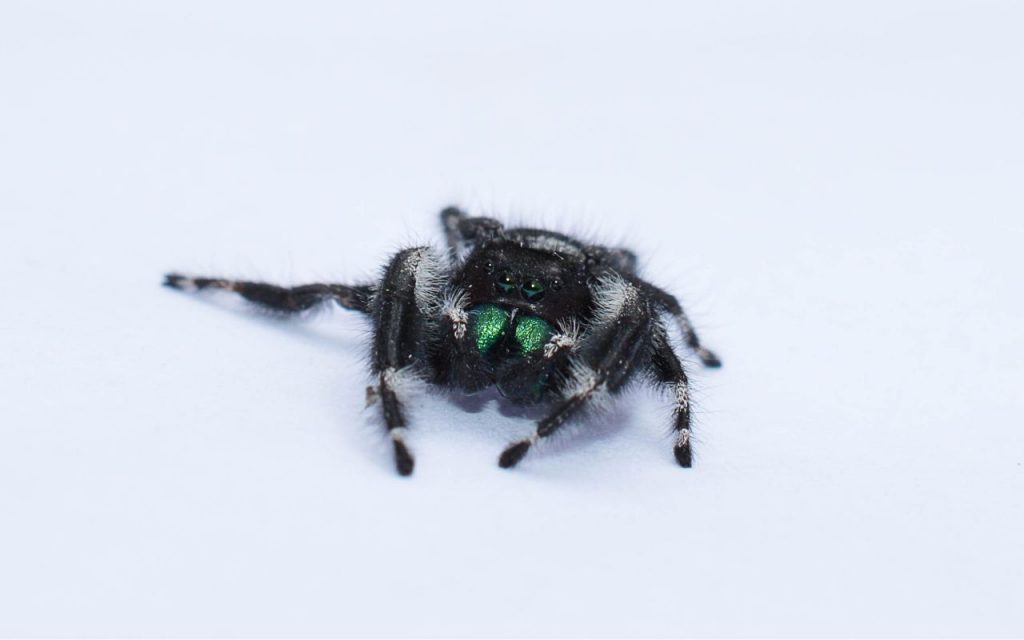
Can you keep a bold jumping spider as a pet?
You certainly can keep a bold jumping as a pet. They are extremely common in the wild, and keeping a few isn’t going to hurt their population at all. Overall, they are easy to keep, and much less expensive than some tarantulas. They are also very reluctant to bite, making them a harmless captive.
Do bold jumping spiders like humidity?
Bold Jumping spiders like humidity in the 60-70% percent range, which mimics their natural environment. If you let them get too dry, it could dehydrate them completely. Spiders are extremely sensitive to humidity, so this is probably one of the most important things to keep an eye on in captivity.

